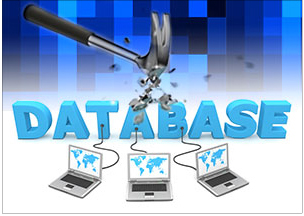One of the coolest parts of my job is talking with customers and partners about their production environment challenges around database technology. A topic of particular interest lately is in-memory database (IMDB) systems and their integration into an existing environment.
The need for speed
Much of the media coverage of IMDB integrations is heavily focused on speed and loaded with terms like real-time processing, on-demand analytics and memory speed. But zeroing in on the performance benefits comes at the expense of so many other key aspects of IMDBs. The technology needs to be evaluated as a whole.
Granted, in-memory databases can store data structures in DRAM with latency that is measured in nanoseconds. (Latency of disk-based technology, comparatively, is glacial – clocked in milliseconds.) Depending on the workload and the vendor’s database engine architecture, DRAM processing can improve database performance by as much as 50X-100X.
 How durable is it?
How durable is it?
Keep in mind that most relational database systems conform to the ACID (Atomicity, Consistency, Isolation, and Durability) properties of transactions. (You can find a more thorough investigation of these properties in this paper – “The Transaction Concept: Virtues and Limitation” – authored by database pioneer Jim Gray.) The matter of relational database system durability naturally raises the question: But how is data protected from DRAM failures when things go haywire and what is the recovery experience like? Relational databases implement the durable property to prevent problems associated with power loss or hardware failure to ensure transaction information is permanently captured.
The commonly used WAL (Write Ahead Logging) method ensures that the transaction data is written to a log file (persisted on non-volatile storage) before it is committed and subsequently written to a data file (persisted on non-volatile storage). When the database engine restarts after a failure, it switches to recovery mode to read the log file and determine if the transactions should be rolled forward (committed) or rolled back (cancelled), depending on their state at the time of failure.
Current in-memory database systems support durability and their implementations vary by vendor. Here is a sampling of durability techniques they use:
- WAL (Write Ahead Logging)
- Traditional method described above using a log file.
- Changes are persisted to non-volatile storage that is used for recovery.
- Replication
- Data is copied to more than one location, and can be across different nodes.
- Recovery can be handled using failover to alternate nodes.
- Snapshots
- Database snapshots are taken at intervals.
- Previous snapshots can be used for recovery.
- Data Tiering
- Frequently accessed data resides only in in-memory DRAM structures.
- Archival or less frequently accessed data resides only on non-volatile storage.
- Replication can be used as well.
Shopping tip: Consider durability when evaluating your options
If changes in your data environment are frequent and require greater persistence and consistency, be sure to also consider durability when evaluating and comparing vendor implementations. Durability is no less important than query speed. Different implementations may or may not be a good fit and in some cases might require additional hardware that can increase cost.
It’s easy to get swept away by all the media attention about how in-memory databases deliver blazing performance, but customers often tell me they would gladly give up some performance for rock-solid stability and interoperability.
For our part, Seagate enterprise PCIe® flash storage solutions not only perform well but also include DuraClass™ technology, which can increase the endurance, reliability and power efficiency of non-volatile storage used for in-memory database systems.
*Old suitcase by allesok used with permission.








Leave A Comment